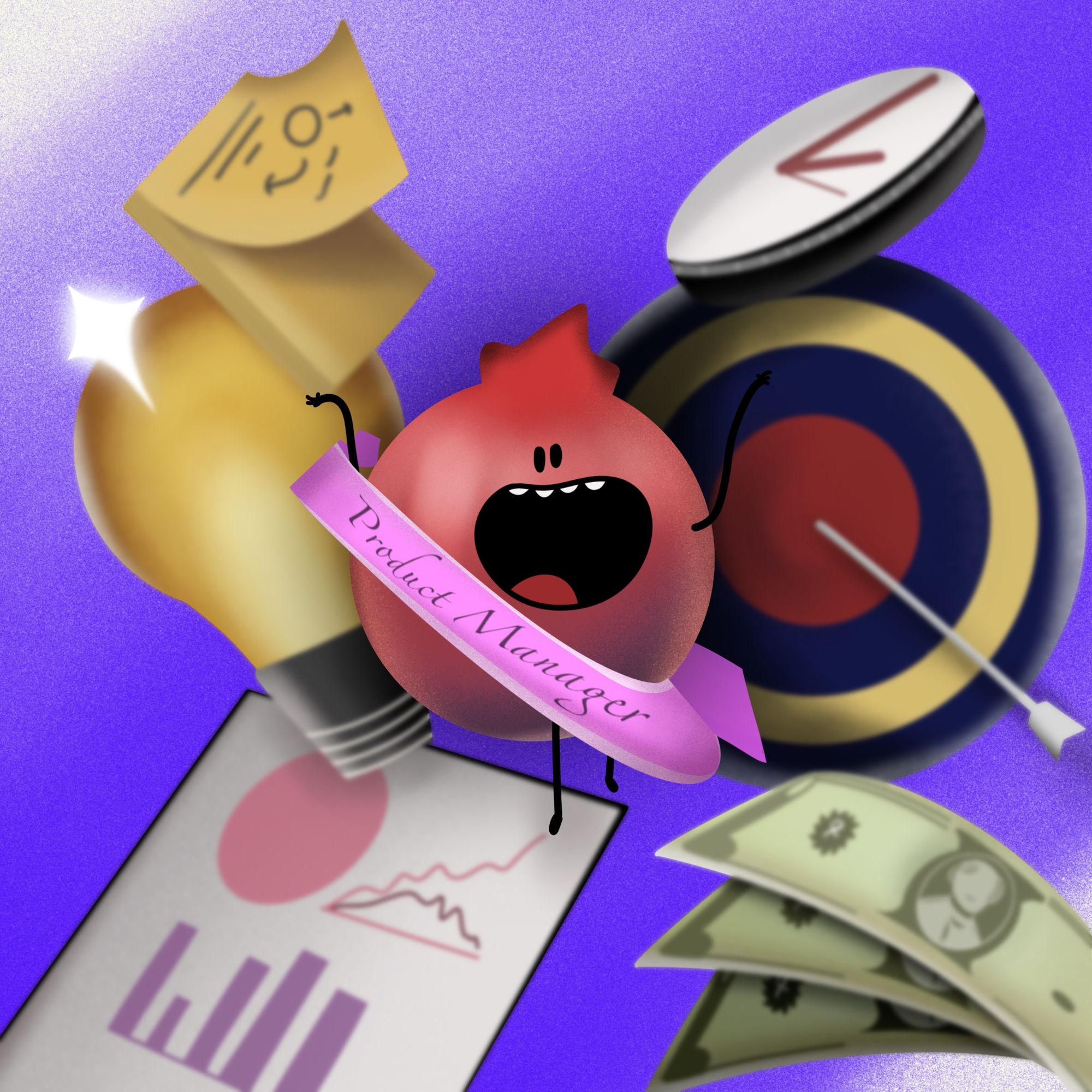You know, we gotta admit that the job of a product management team is an art; crafting an aesthetically pleasing artwork lies in the hands of a product manager(PM) and it's absolutely not an easy task. The task of a product manager is never-ending, and it's a boatload!
An ideal Product manager and his team have oodles of deliverables or itineraries to be meticulously strategized, designed, executed, and delivered to their audience group. The process doesn't end there. They predominantly work closely with business and technical teams, on top of that they act as a hub to Marketing, Development, Support, Sales, Management, and other parts of the company. Without a product management team, each part/team of the company has its own conception of market and product requirements.
Yes, yes! We heard you, cutting to the chase. You might be wondering how a community benefits in achieving the high-end roles of a product manager effectively? In what ways can a community contribute towards helping a product manager and his/her team in achieving a successful product roadmap?
In the following article, we are going to see in what ways a community is vital to building a product that is loved by customers and how Product management teams are benefited by their nifty community?
How do product management teams benefit from their brand communities?
A product manager has a list of strategies and goals that leads them towards executing and delivering a successful product in the market.
What are the typical responsibilities of a product manager?
- Product strategy, product vision, and road mapping.
- Creating quarterly and yearly Go-to-market strategies to ensure the product is a hit and successful in the market.
- Obtain valuable customer insights, customer fluency with the product, and user experience design.
- Reassure quality, product features releases, features specifications, and product delivery.
All right, now how does a community play a key role in a product management team?
Let us take a closer look at how the community helps product managers achieve a colossal part of their goals.
Formulating product strategies
As a product manager, setting a product strategy is where it all starts. It is a point you think big and execute to be potentially big. With the ongoing competitive pressure and market dynamics lurking everywhere, finding a market fit seems quite impossible. So how can you strategize and set clear expectations on how your product will develop in future months with the help of the community?
What do customers really want? How can you provide your customers a product that is market fit and is wanted by your customers? Who do you want your customers to be? How to understand your customers and improve the outcome? These are the strategies a product manager should design the product around, now how can a community help a product manager here?
A solidified community enlightens a PM by providing a brief overview and it builds a foundation to setting up product strategies.
A product manager can scrupulously strategize and formalize the product goals according to the needs and demands of customers obtained from a community.
To know more about why and in what ways a Product manager can get data from their customers through the community, kindly keep reading!
Understanding your target audience persona
Understanding your target audience primarily involves studying customers' psychology and motivations. You need to understand your customers and their motive. Do you think your customers would choose your product over other alternatives? What do your customers benefit from your product? You need to make them understand what’s at the end of the rainbow if they go with your product or service, and then you have to work your tails off to ensure your customer gets there.
You might ask why not get to know your customers better with the help of surveys and questionnaires? Err… that may not work best because most of the time when customers are subjected to surveys, they are aware of being monitored so they typically experience the Hawthorne effect -- an alteration of behavior by the subjects of a study due to their awareness of being observed.
A community is a place where you can study your customers' behavior, how they reason, and choose between different alternatives. As a product manager, you could do your research and identify your ideal customers with the help of communities to know your customers better. But we may not achieve the same results from the surveys, unlike online communities. Do you wanna know how brilliantly these SaaS companies mastered the art of using their communities for support? Then this is totally for you!
Unfolding customer insights
Customer insights provide a broad-gauged view of what customers think of your product, how the customer's data, feedback, and behavior can help a product manager personalize and chisel their products catering to the needs and demands of their customers.
Is there a better way to closely monitor user behavior and connect with your customers to obtain valuable insights if not through brand community?
A brand community is a mirror that reflects every behavior, discussion, feedback, insight, how customers interact with other members, what features does your product lacks compared to your competitors, and how much your customers value your product over the other, are your customers using your product to the fullest, etc., almost everything you want to know about your product or service under one roof.
As a product manager, you can pretty much get every bit of collective information from a brand community.
Gain valuable feedback
About 60% of product managers admit that their innovative ideas came directly from customer feedback.
When as a business you don't connect with your customers, there is a significant void between your company and customers. As a product manager, you must make sure your customers participate and engage in your brand community to obtain direct feedback from your community members which enables you to make better and more informed decisions on products, services, and processes.
Not just working on innovative ideas but also addressing their negative feedback related to your product development and how you can effectively work on giving your customers a seamless experience.
Analyzing the pain points
Here comes the snarly bit of being a product manager. As a product manager, you must identify your customers' pain points -- be it related to customer service, experience, pricing, or application process, you must know what your customers' problems are, if you don’t know their problems you won't be able to solve the problems.
Again, the community comes as the knight in shining armor to save the product manager's time in determining the pain points of customers. Customers aren't gonna jot down their pain points unless you connect with them.
Understanding your customers' pain points is one of the rudimentary step of product development. Because only then you will design a product your customers will love and want from you.
Ask questions in your community to know the following. What desire does it satisfy? Are the customers satisfied with the customer support and services? Are your customers utilizing your product to the fullest? Your customers know what works and what doesn't, they tell the Yays and Nays of your product features they find useful. Once you identify the pain points, once you get mixed reviews and answers from customers about their problems, now you capitalize on solving their problems. If your customers' pain points go unnoticed then it will ultimately lead to churn rate, we don't want that now, do we?
Establishing healthy-decision making & execution part
This is the last mile and one step closer to achieving your product mission goals. This is where you release new product features, although you might get zero points for just getting a feature out the door if it is not actually contributing to making the experience better for users, or helping them to understand, or helping you understand them.
Before releasing the new feature, give access to a bunch of fanatic members of your community, to ask them what they think about the new feature! Trust your loyal community members, they will make your decision-making process easy-peasy!
A community is of great importance for a PM and his/her team to evaluate and establish a healthy-decision making and execution process based on the customer's experiences and feedback of the new features of the product.
Every bit of refinement and thoughtfulness on your part will pull people along. Every petty irritation will stop your customers and give you the impression that it is not worth it.
The following is an ideal example of how the Sephora community has helped its Product manager and team by providing feedback, analysis of customer satisfaction and pain points, product vision and strategies, and execution.
Example : Beauty Insider Community - It is an exclusive community owned by Sephora for makeup fanatics who are excited about trying out new products, swap tests, tips, and tricks, participating in fun challenges, and posting photos of their new product look.
This community enables its members to join in groups they're interested in, share photos in their gallery, provide reviews and feedback on their new products, and also have a Q&A section where members can ask questions and get answers from real-time users.
The quintessence of this community is that it gives Sephora access to user-generated content and customer testimonials, as well as real-time member feedback. Their community is a perfect place for a product manager to get genuine feedback and also address the downsides of new feature product failures compared to other alternatives in the market, where they lag, hence the product strategies had to be formulated accordingly.
Wrapping up
Building a Community should not be an afterthought.
The number of ways a community helps a PM are plentiful. The number of ways a community building platform can help you build and craft your community just got easier, made simple and elegant. A community ensures that every piece of work( strategy, feedback, pain points analysis, new feature releases, and execution) comes together and pivots the job of a product manager. A community has the sorcery power( loyal members) that helps a product manager and his/her team in every step of their mission to achieve each strategic goal, develop, redefine, and polish their product continuously towards a successful roadmap and reach their penultimate goal.

